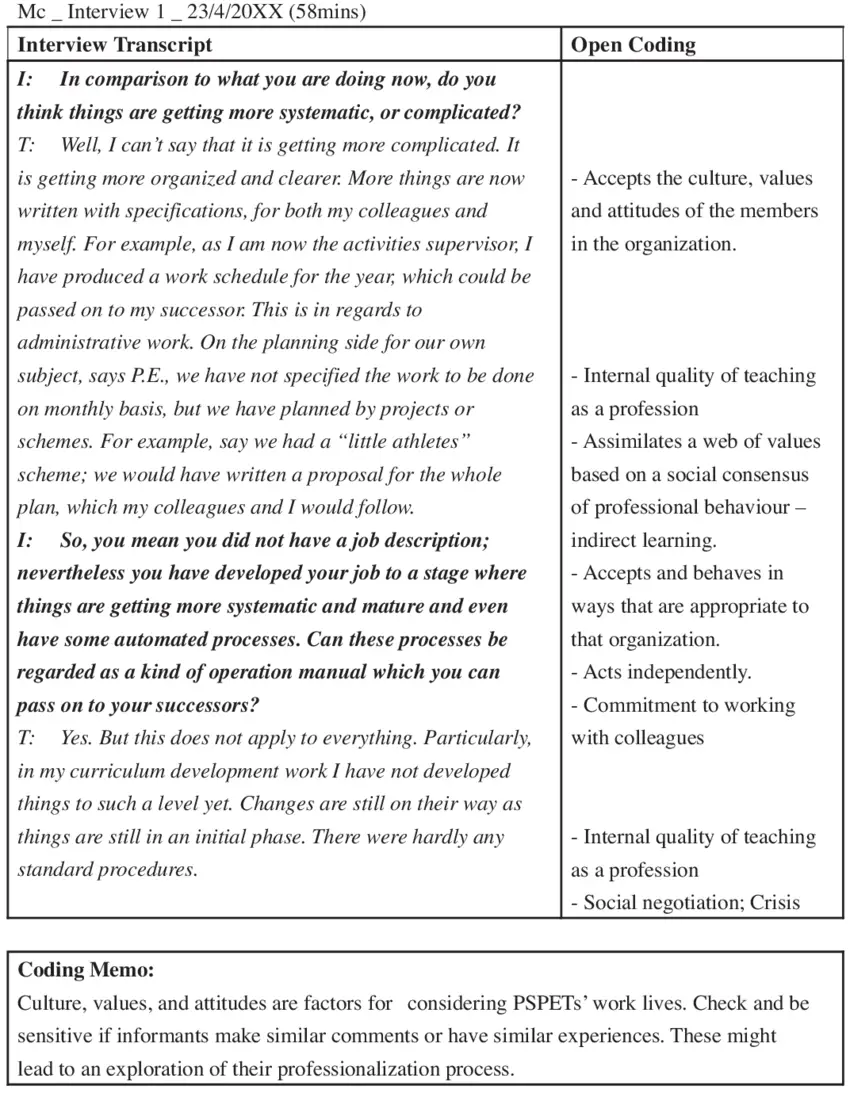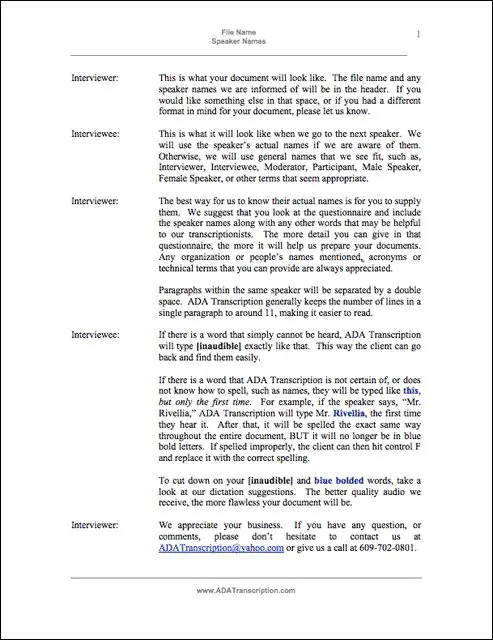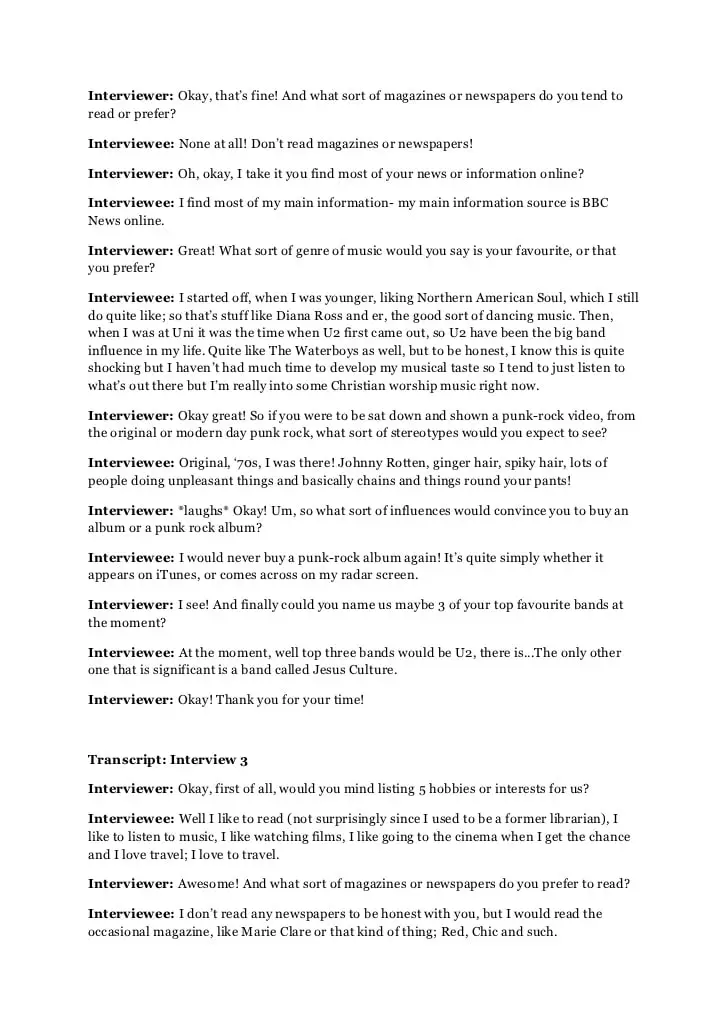Naturalized Or Denaturalized: Is There A Better Technique
On the one hand, the transcription classified as naturalized can generate conflicting interpretations, because readers who are not accustomed to deciphering these interventions in the dialogue, such as noises, pauses in speech, slang, accents, etc. end up decoding these elements in the way they believe are the best, and this can cause different understandings from the same study.
However, by leaving the interview in its purest and least altered form, the researcher would be as transparent as possible with the readers to demonstrate the reason for the analysis. By keeping the transcripts on their original form, respondents end up speaking for themselves , since dialogue is not simply an exchange of ideas, but it also involves verbal and non-verbal cues that can alter the tone of the conversation and, consequently, its meaning .
On the other hand, when considering the denaturalized transcription , the author interprets what was said, the way it was said, the noises and interferences in speech, being responsible for this understanding, making the necessary adjustments in the transcription and passing this data to readers, thus everyone will have the same view of what was said. However, depending on the author who does this refinement of the interviews, the results may vary, as well as the data analysis.
How To Record Research Interviews For Qualitative Research Methods
The conventional way of recording qualitative data is through written notes. However, compared to recording an interview in audio, this method is slower, which can lead to the disruption of the flow of information from your participants.
This is why recording research interviews in audio is preferred as it allows the interviewer to gather everything the participant shared and at the same time have the ability to analyze and edit for clarity during production.
Here are a few tips to ensure a hassle-free audio interview recording:
Ask for consent
The very first step to a harmonious and orderly interview is the approval of the interviewee to be recorded. This ensures that they are well-prepared, and authorizes the entirety of the discussion without reservations.
Find a noise-free environment
Recording an interview works best when disruptions are kept to an absolute minimum make sure you select the right place to interview, away from noises and other potential distractions. This prevents both the interviewer and interviewee from being absent-minded or out of focus.
Finding a noise-free environment is crucial because, as the interviewer, your subject’s responses are very important to capture clearly. Quiet surroundings are recommended to best hear the interviewees answers and insights.
Position your recorder in a good spot
Get ready with your backup device
Tips For Writing The Transcript
Follow these rules while editing transcript:Brackets/Parenthesis : You can use brackets if you add any clarification notes that are not present in the transcript.
Example:I never expected to visit LA
Em dash : You can use it to indicate
- Incomplete sentences or phrases
- Speech interrupted by another speaker.
- Continuation of the speech after the interruption
- The speaker can take a pause etc.
Example:While I was shoppingwandering up and down the aisles, actuallyI ran into our old neighbor.
Ellipses : You can ellipse to indicate the missing audio.
Example:I was about to but I realized that its going to be alright.
Non-verbal communication: You can italicize the non-verbal sounds or events in parenthesis.
Example:, or
Double question marks: when its difficult to understand any word, phrase, or sentence in the conversation, you can make a smart guess using double question marks in parenthesis + timestamp and highlight.
Example:
If you cant understand it, then you can write +timestamp
Also Check: What Are The Top 10 Behavioral Questions In An Interview
Using Your Transcribed Stakeholder Interviews:
The transcriptions of your stakeholder interviews will likely only be used for you and your teamâs reference, rather than shared in a presentation like participant session transcriptions. Depending on your budget, you could use human or AI generated transcripts.
Rev, a popular transcription tool, offers both human and AI-generated transcripts. The more accurate human-generated transcripts are $1.25 per minute of transcription. Their AI-generated ones start at $0.25 a minute. Whichever option suits your budget, Rev is offering a $15 off coupon to User Interviews readers, grab it here.
As far as applying your stakeholder interview transcripts, they can be used to steer your conversations and help you create better note-taking templates before you actually do any research with participants.
When we chatted with Caitria OâNeill, UX Researcher at Google, about creating better research presentations, she highlighted the importance of honing in on stakeholderâs points of view before conducting research and then bringing that knowledge to your presentation.
âFor a typical study, let’s say a usability study where the product is in flight and we’re trying to figure out what to build. I will generally throw a meeting where I have the product manager, the designers, data scientists, and maybe one or two of the front end folks come and sit down, and then go through where the product is at, so I’ll have the designer walk through.
What Are The Aims Of The Research Project

Researchers’ methodological assumptions and disciplinary backgrounds influence what are considered relevant data and how data should be analysed. To take an example, talk between hospital consultants and medical students could be studied in many different ways: the transcript of a teaching session could be analysed thematically, coding the content of talk. Analysis could also look at the way that developing an identity as a doctor involves learning to use language in particular ways, for example, using medical terminology in genres such as the case history. The same data could be analysed to explore the construction of truth in medicine: for example, a doctor saying the patient’s blood pressure is 120/80 frames this statement as an objective, quantifiable, scientific truth. In contrast, formulating a patient’s medical history with statements such as she reports a pain in the left leg or she denies alcohol use frames the patient’s account as less trustworthy than the doctor’s observations. The aims of a project and methodological assumptions have implications for the form and content of transcripts since different features of data will be of analytic interest.
Recommended Reading: What Is The Good Question To Ask In Interviews
Interview And Academic Transcription Services
Are you searching for a solution to your audio blues?
We understand: life in the fast lane can be hard. Between meetings and reports, the last thing busy professionals need to do is find time for interview and academic transcription services. Thatâs where we come in.
We are a professional interview and academic transcription services company with a multi-lingual team that has a solid history of producing accurate copy.
Transcribe Interview offers you:
An easy to use and stress free process
98% or more consistent accuracy
Friendly support team available 24/7
Money back guarantee
Interview transcription services cost $0.80 per recorded minute
Languages include English, French, German, Portuguese and more…
Hiring A Freelance Transcriptionist
If you cant afford the services of a transcription agency , then its best to use the services of a freelance transcriptionist. Sites like Guru.com, Freelancer.com, and Fiverr.com have a good pool of service providers who can help.
The good part about hiring a freelancer is that they can do the work relatively cheaply with almost the same turnaround time as a transcription company. The downside is that you have to experiment a little to find the right transcriber.
In the rest of this post well discuss Option #2, i.e. how to transcribe an interview manually yourself.
Lets dive in.
Recommended Reading: How To Ask Good Interview Questions
How To Transcribe An Interview: A Complete Guide
Those who conduct comprehensive research know that administering and recording interviews is necessary for collecting project-related information. The best way to utilize interview findings is to create an audio-to-text transcription, which allows for a more focused analysis of the qualitative data.
Reading from a text document is less problematic than listening to lengthy audio recordings, and only transcribed conversations allow the researcher to efficiently sift through pages of dialogue.
What Equipment Is Needed
Decisions about the level of detail needed for a project will inform whether video or audio recordings are needed. Taking notes instead of making recordings is not sufficiently accurate or detailed for most qualitative projects. Digital audio and video recorders are rapidly replacing analogue equipment: digital recordings are generally better quality, but require computer software to store and process, and digital video files take up huge quantities of computer memory. It is usually necessary to playback recordings repeatedly: a foot-controlled transcription machine facilitates this for analogue audio tapes and transcribing software is recommended for digital audio or video files, since this allows synchronous playback and typing .
Digital video recording equipment: video camera with firewire computer lead, mini DV cassette and Transana transcribing software
Also Check: What Is The Best Answer For Interview Questions
How To Transcribe Using Self Transcription
How To Transcribe Using Voice Typing
For those who tend to get lazy in the middle of transcribing, Transcribe also has a feature for your benefit. The Dictate feature lets you speak what you hear and will continue transcribing on your behalf.
Heres how:
Recommended Reading: How To Crack Technical Interview
Outsourcing To A Transcription Agency
If the recording is in a language you dont understand, or if you dont have time to do the transcription yourself, then outsourcing to a transcription agency is a good idea.
All you have to do is send them your recording with detailed instructions and they will return a neatly formatted and time-coded transcript to you in a fairly short period of time.
How To Transcribe An Interview For Dissertation Part 1

t is a truism to note that all transcription is in some sense interpretation
In summary, here is how you transcribe your research interviews.
In this first post of a 2 part series on how to transcribe an interview for dissertation, Ill start with a brief overview of the thesis transcription process. Then discuss 3 ways to transcribe your research interviews. And finally make a few remarks on accuracy of the transcripts and audio quality.
Recommended Reading: How Do You Prepare For A Job Interview
What Are The Advantages Of Using Research Interviews In Qualitative Research
Qualitative research takes a humanistic approach to exploring and understanding an issue.
The primary sources of qualitative research include interviews, focus group sessions, observation, archive documents, and field recordings. These primary sources are highly valuable to academic work. They illustrate original thinking and research, and they create material for the record. Although primary sources are not without bias, they can help temper the scholars natural bias.
Research interviews can also add valuable context to quantitative research. Interviews add color and meaning to your work, making your findings comprehensible and applicable. And they add a human element to academic work to prevent it coming across as dry.
Using interview transcripts is also a high-value, low-cost way to quickly generate ideas and material for your research.
What Contextual Detail Is Necessary To Interpret Data
Recordings may be difficult to understand because of the recording quality and differing accents or styles of speech. Utterances are interpretable through knowledge of their local context , for example, allowing differentiation between I don’t, no and I don’t know’. Interaction is also understood in wider context such as understanding questions and responses to be part of an interview or consultation genre with particular expectations for speaker roles and the form and content of talk. For example, the question how are you? from a patient in consultation would be interpreted as a social greeting, while the same question from a doctor would be taken as an invitation to recount medical problems. Contextual information about the research helps the transcriber to interpret recordings , for example, details about the project aims, the setting and participants and interview topic guides if relevant.
Don’t Miss: How To Prepare For A Substitute Teacher Interview
Using Your Research Session Transcriptions:
Transcribing your research sessions is most effective when you have accurate transcripts that you donât have to spend time correcting. So weâd recommend going with real live human transcription instead of AI generated. Itâs more accurate and youâll spend less time correcting the transcription and more time analyzing your findings.
Rev is a great tool for human transcription, with prices starting at $1.25 a minute. Theyâve also shared a $15 off coupon for User Interviews readers, grab it here.
Weâve used them in the past for our podcast transcriptions, and theyâre typically much more accurate than the AI-generated alternatives. Plus, Rev has a sweet suite of tools in their platform, like folders for organizing different projects and a searchable database of all your transcriptions.
Once you have your transcriptions, you can use them with the notes you took during your sessions to make data analysis easier. Start by identifying key themes that emerged during your user interviews. You probably already have a good idea of what these are, especially if you did stakeholder interviews beforehand. These themes will help you tag and organize your interviews, as well as identifying the best quote to highlight each one.
Pro tip: Use the note-taking template in our user interview launch kit to take automatically time-stamped notes. This makes finding the right moment in your transcript a breeze.
Try Reducts Video Transcription Analysis & Editing Platform For Free
Reduct is a video transcription, video analysis, and video editing tool that is actually built by a researcher: we not only give you a high-quality transcript to kickstart your research, but we also give you tools to conduct your research and share all of your findings.
To see how Reduct improves your research processes and lets you better utilize your video content even when you are working with hundreds of video files get in touch with our team to start a free trial.
Recommended Reading: What Is A One Way Interview
Transcribing Your Own Qualitative Data
In a previous blog article I talked about some of the practicalities and costs involved in using a professional transcribing service to turn your beautifully recorded qualitative interviews and focus groups into text data ready for analysis
In a previous blog article I talked about some of the practicalities and costs involved in using a professional transcribing service to turn your beautifully recorded qualitative interviews and focus groups into text data ready for analysis. However, hiring a transcriber is expensive, and is often beyond the means of most post-graduate researchers.
There are also serious advantages to doing the transcription yourself that make a better end result and get you much closer to your data. In this article Im going to go through some practical tips that should make doing transcription a little less painful.
But first, a little more on the benefits of transcribing your own data. If you were there in the room with the respondent, you asked the questions, and were watching and listening to the participant. Do the transcription soon after the interview and you are likely to remember words that might be muffled in the recording, points that the respondent emphasised by shaking their head lots of little details to capture.
What do I actually type?
In a word, everything: the questions, the answers, the hesitations and mumbles, and things that were communicated, but not said verbally.
So how long will it all take?
So how can you make this faster?
How To Transcribe Interviews Instantly
Rasheed Ahamed
Giving your full attention during any conversation is keyâespecially if itâs an interview! . If you think about it, the content of the interview decides the findings researchers share, the case studies marketers create, and the stories journalists publish.
When we shifted to remote work, interviews naturally ended up on video conferencing platforms like Zoom. Unlike offline events, you can easily record and transcribe your virtual interviews â capturing every word with its nuances.
This means itâs also easier to analyze, interpret, and share your interviews. In this post, weâll focus on how to transcribe your interviews and edit and download transcripts in the preferred format.
Read Also: How To Bring A Resume To An Interview
Choose A Transcription Method
Transcriptionists who prefer not to manually convert the audio interview to text can use an automated transcription service such as Sonix.
You can also outsource the job to an experienced freelancer .
The method for transcribing an interview depends on the complexity of the audio file, the required level of transcription accuracy, project deadline, and confidentiality standards. Those who need a quick turnaround should use an online service or freelancer who can competently expedite the job.
Use Transcription Services For Research Interviews

When choosing a transcription service for your research interviews, you dont need the process to be more complicated than it needs to be. Look for an interview transcription service that makes it easy to get started.
Transcription services like Rev provide top-notch accuracy for any qualitative research project. Rev uses a network of 60,000 professional transcriptionists and guarantees 99% accuracy on human transcription services.
Recommended Reading: How Can I Watch Meghan And Harry Oprah Interview